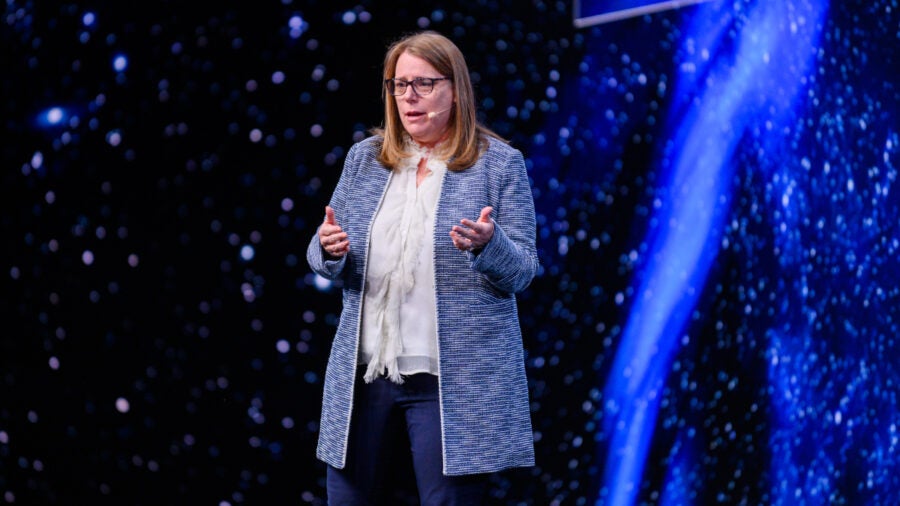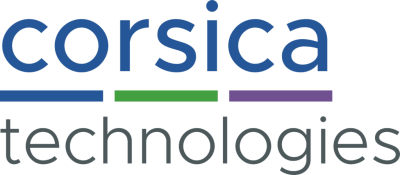
Microsoft called it “eating our own dog food”. Shannon Bell prefers “drinking our own champagne”, but the meaning is the same: a company stands to benefit from using its own products.
Bell is chief digital officer at the Canadian software business OpenText. A newcomer who joined the company in 2023, Bell is eyeing $1bn (£798m) in savings over the next decade, using the company’s own tooling to help achieve the ambitious goal.
This may help investor confidence, which has been dented recently. Earlier this month, investment bank RBC Capital downgraded OpenText stock over inconsistent quarterly results, which analysts described as seasonal and based on large cloud bookings. But most of all, OpenText is under pressure to make good on operationalising its $5.8 bn (£4.6bn) acquisition of enterprise software multinational Micro Focus – and steer the purchase into growth.
OpenText is planning flagship software releases and new channel partner initiatives. It hopes to usher in a new era of growth as part of a business optimisation plan which began this year with the company sacking 1,200 employees and preparing for “OpenText 3.0” – a renewed focus on the cloud and AI.
Where OpenText is making savings
The idea is that OpenText will use all its own tooling to achieve its savings goals. For example, the company is promoting its AI-based Content Aviator product for document management internally, with salespeople using the service to generate proposals and support staff using it to find documents quickly.
In HR, OpenText Service Management software is being deployed to run the corporate IT helpdesk, while the 2,000-person IT operations team is using AI-powered operation management to speed up incident response.
And an internal project, codenamed ‘Platform Thor’ – which uses OpenText tooling for lifecycle management, security checks and engineering or service documentation – has helped the business move from 50 siloed, standalone tools, to one integrated toolset to manage “10 billion lines of code” for “10,000 developers across engineering, professional services and cloud operations,” Bell wrote in a blog post.
OpenText wants to save $100m (£80m) in cost avoidance by “proactively managing and eliminating expenses before they arise”. It will aim for around $240m in savings through software-driven productivity improvements and better processes. A $175m chunk will come through “automating redundant tasks and enhancing process efficiencies”.
Then there will be $375m from optimising technology systems and infrastructure, plus a $160m consolidation of its data centre footprint and maximising the use of cloud computing.
Why now? Part of the rationale is that Micro Focus has now been thoroughly integrated into OpenText. “We’re seeing the benefits,” says Bell. “A year ago, the Micro Focus acquisition was so new, but now the technology is deployed.”
It’s time, then, for OpenText to drink its own champagne. This could also bring sales benefits. All its internal work with the latest OpenText products can become a living case study for customers, with provable metrics via those planned cost savings.
Although it’s only just been announced, the initiative is already proving its value, Bell says.
“They get it because it’s their language. I do the same job as them. Customers relate to the message, because it’s all the same things they’re dealing with. They understand the cost structures, they understand the categories of savings and they understand how that could all be possible for them by using technology.”
Customers relate to the message, because it’s all the same things they’re dealing with
How OpenText created its billion-dollar-savings model
It’s an ambitious task. Bell says she has “spent dozens and dozens” of hours on the programme and “knows every line item, every detail, every number” because she needed to understand whether OpenText could achieve its billion-dollar goal.
To determine the areas where the company could realistically make those savings, Bell’s executive team partnered with others in the organisation, such as the finance team, to look into the cost structure of the business. The goal was to understand the “addressable” factors that were driving growth in certain costs.
“We looked at it in terms of people and non-people costs and split that out,” she says. “Then we looked at current run rate costs, but also at what the cost would look like if we have to modernise or move facilities.”
It is a complex model, Bell notes. “It covers many, many, many Excel spreadsheets and walks through different options around cost structures and categories. Something like telecommunications costs would map into my model as data centre savings, because most of my telecom costs are in laying circuits into data centres.”
The team started to work through all its deliverables and the benefits of existing costs before plotting these out each year into the future. “We’ve been testing the model all year to measure if we’re seeing the savings we anticipated, so we could really understand if it holds weight and is working. That’s why we have the confidence to say, ‘this is the model.’ We’ve been able to test it and see.”
But a decade is a long time and even the best-laid plans have a habit of going awry. With any strategy, you’re mapping out a target rather than an end state, acknowledges Bell. “Your target state is going to evolve and change over time,” she says. “But we analysed budgets over the years to draw out trends from previous budgets and to make sure we’re not overlooking anything.”
Whether Bell’s model works, survives unforeseen events and translates to real savings remains to be seen. “But I feel we’ve done a good job anticipating the things in our line of sight or that we can expect to happen,” she says.
How to create a cost-cutting plan in eight steps
Work with finance and other relevant team members to understand your organisation’s costs. Identify the main cost drivers and addressable costs.
Divide costs into categories such as people costs and non-people costs and then further categorise these costs into subcategories.
Develop a comprehensive model to project potential cost savings over time, tracking those different categories and exploring what various cost-reduction options might look like.
Analyse historical budget data to identify recurring cost trends and ensure that you are not overlooking any potential opportunities for savings.
Factor in not only the current run rate costs but also the potential costs of modernisation, facility relocation or other future needs.
Regularly monitor your progress against the plan, comparing projected savings to actual savings. This will help you determine if the model is accurate and effective.
Recognise that unexpected events can impact your ability to achieve savings. Create room for adjustments in your plan to account for unforeseen circumstances such as macro events.
Not a rigid set of rules. The target state might evolve over time, so be prepared to adapt and make changes as needed.

Microsoft called it “eating our own dog food”. Shannon Bell prefers “drinking our own champagne”, but the meaning is the same: a company stands to benefit from using its own products.
Bell is chief digital officer at the Canadian software business OpenText. A newcomer who joined the company in 2023, Bell is eyeing $1bn (£798m) in savings over the next decade, using the company’s own tooling to help achieve the ambitious goal.
This may help investor confidence, which has been dented recently. Earlier this month, investment bank RBC Capital downgraded OpenText stock over inconsistent quarterly results, which analysts described as seasonal and based on large cloud bookings. But most of all, OpenText is under pressure to make good on operationalising its $5.8 bn (£4.6bn) acquisition of enterprise software multinational Micro Focus – and steer the purchase into growth.





